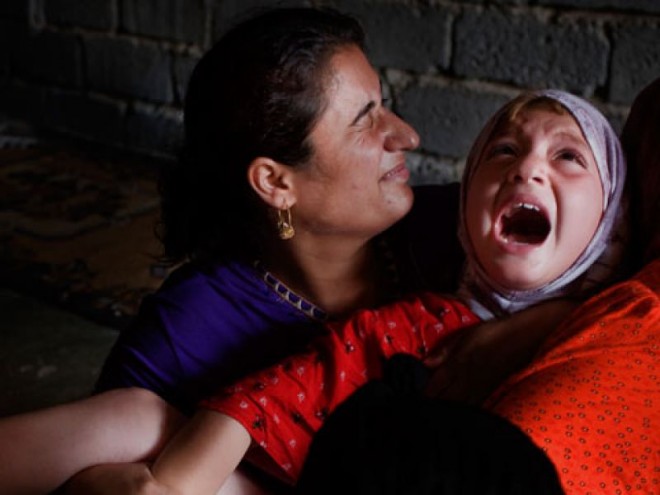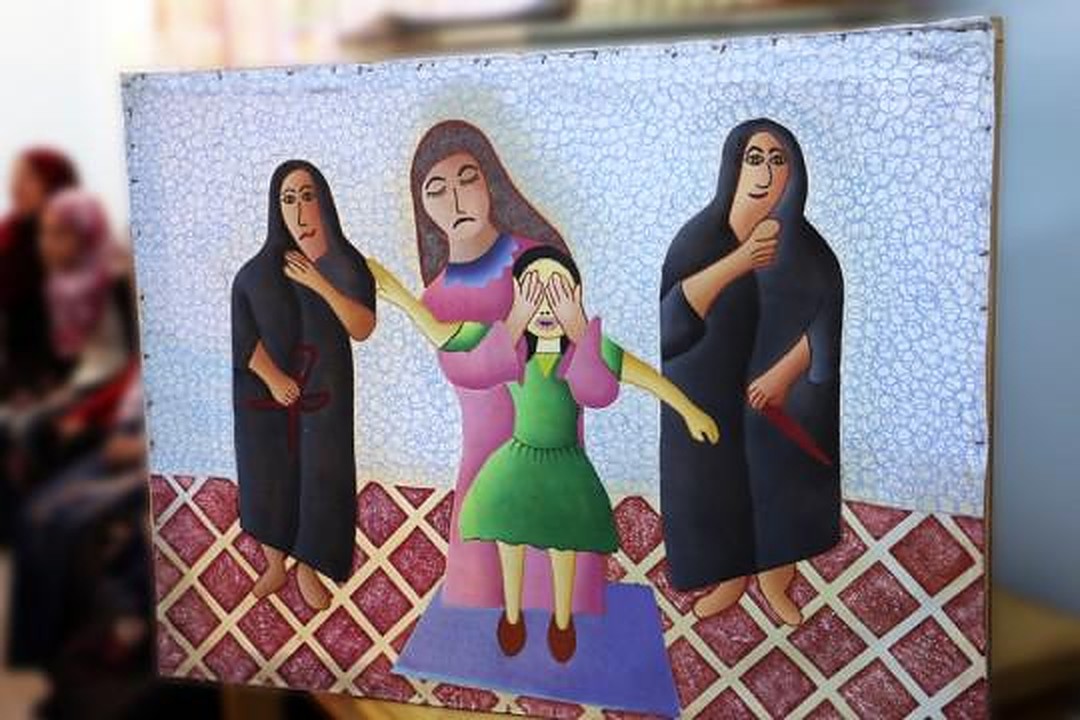
Female Genital Mutilation (FGM) is one of the biggest issues facing Egypt’s female population. The United Nations Population Fund estimates that 92 percent of women and girls aged 15-49 in Egypt have undergone FGM.
The tradition, whose origins remain an obscure and contentious topic, continues to plague communities across the country, with clitoridectomy being the most common FGM procedure in Egypt.
The procedure is often performed on young girls without their consent—in many cases, victims are physically restrained—and in unsanitary conditions, which leads to lifelong complications. FGM victims can develop incontinence and are more likely to suffer vaginal infections than other women. Other issues that often affects women who have undergone FGM include pain during intercourse and childbirth and, in many cases, difficulty enjoying sex.
In addition to the physiological effects of FGM, survivors can also develop mental health issues, such as depression and post-traumatic stress disorder, often accompanied by flashbacks of the procedure.
One organization working to make FGM survivors whole again is the Restore Foundation, whose services range from psychological support and psychosexual therapy, to providing surgical and nonsurgical solutions to restore genitals to their natural form.
“I have been doing reconstructive surgeries for FGM victims for more than 22 years … [However], we have found that surgery is not the only method of dealing with complications of FGM. Actually in Europe, they are starting [to rely more on] psychotherapy for these victims,” cosmetic and reconstructive gynecologist and co-founder of the Restore Foundation Dr. Amr Seifeldin tells Egyptian Streets.
Founded by Seifeldin and plastic surgeon Reham Awwad, the non-profit organization is helping to advance the level of healthcare provided to survivors in FGM in Egypt through their interdisciplinary approach, which is seldom attempted in Egypt. But despite the wide array of services offered by the organization, most FGM victims opt for the more drastic surgical solution.
“We don’t just take the patient as soon as she comes in to surgery, she is subjected to psychotherapy—psychosexual therapy actually, analysis and treatment, if necessary. And then if the problem is sensation, we can try nonsurgical methods first. If we find that the patient needs surgery, then we schedule her for surgery after psychological evaluation,” he explains.
Clitoral reconstructive surgery was first introduced by French urologist Pierre Foldès in the early 90s. The procedure restores the clitoris to its aesthetic form and employs a technique through which surgeons can repair the nerve networks to increase sensation.
“People think that most of the clitoris is cut, that is not true. The clitoris is an eight-12 cm organ, so only the palpable part is amputated, so what we can do is take the remainder of the clitoris and change the course; instead being upright, stuck to the pubic bone, we change the course into the normal anatomical position. And we can enhance sensitivity by injecting certain shots inside the clitoral body to enhance sensitivity, blood flow, and sensation,” says Seifeldin, who pioneered clitoral reconstruction in Egypt and was one of the first doctors to perform the surgery in the country.
Sensation can improve by 80 to 81 percent in most cases, the world-renowned gynecologist explains, more importantly, however, doctors and healthcare professionals have observed that the surgery can improve a woman’s sex life and relationship with her body in other areas as well.
“The success rate is around 90 percent when it comes to psychological well-being. It changes the psychosexual aspect of [a woman’s life], boosts confidence, self-esteem, [gives her a] better quality of life, especially if she is married. It results in a better relationship with parents [who choose to have FGM performed on their daughters],” explains Seifeldin, who founded and served as the former head of Al Galaa Hospital’s rogynecology and cosmetic gynecology unit.
Other, less invasive methods include the injection of certain compounds into the clitoral body in order to increase sensation and improve a woman’s ability to enjoy sex. The Restore Foundation also offers labial reconstruction surgeries, which correct type 2 FGM—the partial or total removal of the labia.
Seifeldin warns, however, that surgery isn’t always necessary. “There are a lot of women who can achieve a normal sexual relationship even if they are circumcised, and reach orgasm. The problem persists, however. If you can have an orgasm, can it be a stronger, more intense one?” Seifeldin remarks. “Usually if a woman can [climax] within the normal time, it is probably better not to [consider] surgery.”
In these cases, Dr. Seifeldin recommends psychosexual treatment and non-surgical and less invasive procedures instead. However, for most of his patients, recovering from the trauma of FGM requires the drastic restoration surgery.
“We have a problem with a lot of young [FGM victims], women aged 18-34. We tell them if you can achieve an orgasm normally, within the normal time frame, there is no need to do the surgery, but they don’t believe us. I have heard something of a quote from a patient of mine once: ‘what was taken out with a scalpel can only be restored with a scalpel.’ And I understand that, but I don’t believe this is true,” Seifeldin explains.
The challenges that mar an FGM victim’s life are both sexually and psychologically debilitating. For most survivors, the mutilation creates a sense of inadequacy, which can result in body image issues and sexual dysfunction that can deeply impact a woman’s relationships with sexual partners.
Due to patriarchal norms and views that trivialize and minimize female sexual satisfaction as opposed to recognizing it for the basic human need that it is, not many FGM victims are able or willing to seek treatment. According to Seifeldin, most of the patients he has treated throughout the years have been young, educated, middle-class women.
“The uneducated don’t really care much about that, it is not something that’s life threatening, it improves the quality of life, so you have to have a certain educational background to want to improve your [sex life],” Seifeldin says.
Reconstructive surgery is gaining growing prevalence in Egypt as a possible course of treatment for FGM, however the topic is still marred by social controversy due to a lack of familiarity with concepts like female bodily integrity and autonomy in many communities and in mainstream culture.
The emergence of these treatments and surgeries, which have been developed over decades, coupled with the shifting public discourse on FGM, especially by state institutions, is encouraging. However, FGM is far from a waning tradition. Dr. Seifeldin estimates that there are approximately 40,000,000 FGM cases in Egypt.
“Forget what the World Health Organization (WHO) and UNICEF are stating because what they are doing to decrease the numbers is they are putting an age group between 15 and 49. FGM is done in Egypt according to ancient Egyptian beliefs, so usually the age starts at seven or maybe even younger. So usually the age is from 7-13, which lies before the 15-49 [category] that the WHO and UNICEF have put. Rarely in Egypt will you find a girl who was circumcised above the age of 15, very rarely. Statistically, we have around 40,000,000 cases,” Seifeldin declares.







Comments (9)
[…] Restore Foundation: The Egyptian Doctors Making FGM Survivors Whole Again […]
[…] Restore Foundation: The Egyptian Doctors Making FGM Survivors Whole Again […]